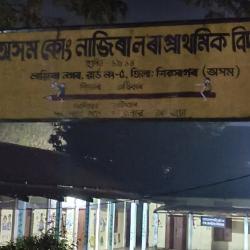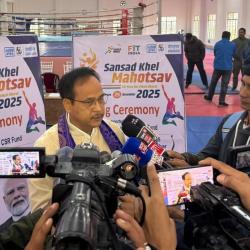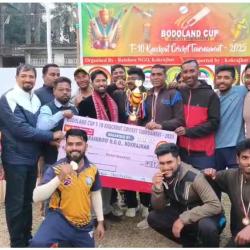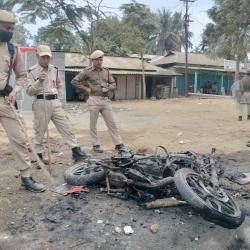Selabela falls under Bongaigaon district of Assam, under Manikpur police station. The relief camp in Selabela accommodates Muslims who were displaced in the conflict between the Muslims and the Bodos in 1993. They originally belong to Amteka, Amguri, Malivitha and Koila Moila. The reason for this conflict was that they were migrants form Bangladesh who came to these villages in the 1970’s and were uprising the land in the Bodo villages, and becoming powerful also. After the conflict in which a lots of the Muslims houses were burnt, they became people who were internally displaced people who were sent first to the relief camp in Goraimari where they were staying till 7 months before. It was after this when the expansion of the highway that they were shifted to the relief camp in Selabela. There are 4 Muslim relief camps, the largest of which is in Selabela. We were told that the Selabela relief camp houses 1832 families, and the population was 9900. The other relief camps are: Hapachara: 1332 families, population of 6265; Balajan: 595 families, population 3080; Tapatari: 60 families, population of 280.
In the violence that happened in 1993, 94 people (64 according to government estimates) in Bongaigoan, and 35 people (30 in government estimates) in Kokrachar lost their lives.
The people in the relief camp in Selabela live under very hostile circumstances. The camp is located in Bongaigoan, which is part of Assam, and does not fall under the newly formed BTC (Bodoland Territoral Council). However, the areas that they inhabited before, falls under the control of the BTC. Therefore, the people in the areas around their camp who are Assamese, have made them unwelcome and said that they should go back to the areas under BTC. They are not allowed to use the road on one side and people are afraid to go out of the relief camp. Therefore, they are not able to work outside, and there is not much work to do inside the camp.
Unemployment is a major issue inside the camp. The men work outside daily wage labourers, especially in places of building construction, do small time business (and that too, going through the oral only in one direction as the other is banned for them) lots of people in the camp, have gone outside to places like Guwahati, Lucknow, Shillong, Mumbai, and Delhi searching for jobs. The women usually don’t work unless it’s a woman-headed household (which happens when the husband dies). There are around 70 such households and the women there work mostly in the wayside hotels as helpers.
Facilities for education are also very poor. There is only one EGS (Education Guarantee Scheme) centre, which we visited. It was a small 2 room shed where around 150 children were present. The school teacher (name not to disclose) said that there were around 270 children who had enrolled but people keep in dropping in and out. There are absolutely no facilities and in a very touching manner, the assistant teacher Mr. Abdul Kalam pointed that the children to me and asked me: “look at their faces, what all these children will do in the future? They cannot get education, no jobs….”
In our conversation, it came out that one of the most frustrating things was that the youth were unemployed and there was nothing that they could do inside the camp. We were told: “we feel paralyzed, as though our hands and legs were tied with chains”.
Another issue was of housing. Most of the houses we say were kutcha houses, which were really small. It was impossible to imagine that even one person can live inside that crammed space, and it was shocking to learn that 1 or 2 families usually stayed inside it. All these were also contracted by the people as the government had made no facilities. There were other houses, which were slightly larger (and still Kutcha) were made by the government and 5-6 families lived inside it. It was slightly drizzling while we were there and we found that the houses were already wet with small puddles of water inside. So I asked them how they managed during the heavy rains in the past weeks. They said that for around 15 days, they couldn’t sleep inside the houses. The nights were spent staying awake, and walking on the road, or sitting up somewhere.
They said that the facilities for water really bad. The approximately 10000 people in the camp had 50 tube wells that the government had built, out of which more then half were not working. There are 200 latrines in the whole camp. They said that the government gave around Rs. 7000 for construction of the toilets, in which time, a pole of bamboo was costing around 50 rupees. They said that a lot of people had constructed these with their own money.
There were no proper medical facilities. When people fell seriously sick, they were rushed off to a hospital in a van that the MSF had donated (NGO) there was a medical shop run by a person (name not to disclose)
Also, they were not getting proper relief supplies. Only rice was given to them while they were entitled to rice, dal and oil. Moreover, they hadn’t received their relief for a month of August. We told them that they could find out about non-receipt of their relief materials from the authorities using RTI.
We talked to a person (name not to disclose) who was the president of all the relief camps. We asked him about the relief, and what were their demands. He said that right now, they were bargaining for Rs.50000 as compensation. He said that initially they had 7 demands:
Right now, the demands had come down to the Rs.50000 as compensation. Even this was Rs.3 lakh in the beginning.
It was also told that Muslims have more bargaining power than the Adivasis, (another group who are displaced during Bodo-Adivasi conflict) in the region. And it is very troubling that their bargaining power has got them only so much.
The issue here may have many angles and dimensions to it, political and otherwise. However, the situation that exists currently is nothing short of degradation of man. The kind of raw deal that they have been given is sad, reminder of the insensitivity of one human being (individual or community) towards another, which requires immediate action.
In the violence that happened in 1993, 94 people (64 according to government estimates) in Bongaigoan, and 35 people (30 in government estimates) in Kokrachar lost their lives.
The people in the relief camp in Selabela live under very hostile circumstances. The camp is located in Bongaigoan, which is part of Assam, and does not fall under the newly formed BTC (Bodoland Territoral Council). However, the areas that they inhabited before, falls under the control of the BTC. Therefore, the people in the areas around their camp who are Assamese, have made them unwelcome and said that they should go back to the areas under BTC. They are not allowed to use the road on one side and people are afraid to go out of the relief camp. Therefore, they are not able to work outside, and there is not much work to do inside the camp.
Unemployment is a major issue inside the camp. The men work outside daily wage labourers, especially in places of building construction, do small time business (and that too, going through the oral only in one direction as the other is banned for them) lots of people in the camp, have gone outside to places like Guwahati, Lucknow, Shillong, Mumbai, and Delhi searching for jobs. The women usually don’t work unless it’s a woman-headed household (which happens when the husband dies). There are around 70 such households and the women there work mostly in the wayside hotels as helpers.
Facilities for education are also very poor. There is only one EGS (Education Guarantee Scheme) centre, which we visited. It was a small 2 room shed where around 150 children were present. The school teacher (name not to disclose) said that there were around 270 children who had enrolled but people keep in dropping in and out. There are absolutely no facilities and in a very touching manner, the assistant teacher Mr. Abdul Kalam pointed that the children to me and asked me: “look at their faces, what all these children will do in the future? They cannot get education, no jobs….”
In our conversation, it came out that one of the most frustrating things was that the youth were unemployed and there was nothing that they could do inside the camp. We were told: “we feel paralyzed, as though our hands and legs were tied with chains”.
Another issue was of housing. Most of the houses we say were kutcha houses, which were really small. It was impossible to imagine that even one person can live inside that crammed space, and it was shocking to learn that 1 or 2 families usually stayed inside it. All these were also contracted by the people as the government had made no facilities. There were other houses, which were slightly larger (and still Kutcha) were made by the government and 5-6 families lived inside it. It was slightly drizzling while we were there and we found that the houses were already wet with small puddles of water inside. So I asked them how they managed during the heavy rains in the past weeks. They said that for around 15 days, they couldn’t sleep inside the houses. The nights were spent staying awake, and walking on the road, or sitting up somewhere.
They said that the facilities for water really bad. The approximately 10000 people in the camp had 50 tube wells that the government had built, out of which more then half were not working. There are 200 latrines in the whole camp. They said that the government gave around Rs. 7000 for construction of the toilets, in which time, a pole of bamboo was costing around 50 rupees. They said that a lot of people had constructed these with their own money.
There were no proper medical facilities. When people fell seriously sick, they were rushed off to a hospital in a van that the MSF had donated (NGO) there was a medical shop run by a person (name not to disclose)
Also, they were not getting proper relief supplies. Only rice was given to them while they were entitled to rice, dal and oil. Moreover, they hadn’t received their relief for a month of August. We told them that they could find out about non-receipt of their relief materials from the authorities using RTI.
We talked to a person (name not to disclose) who was the president of all the relief camps. We asked him about the relief, and what were their demands. He said that right now, they were bargaining for Rs.50000 as compensation. He said that initially they had 7 demands:
- Relief (Rice, dal and oil) as long as they were in the camp.
- Rehabilitation in government land along with a house under the India Awaz Yojana.
- Rs. 50000 as compensation
- Proper water supply in the land provided
- Education facilities
- Medical facilities
- Job for the unemployed youth.
Right now, the demands had come down to the Rs.50000 as compensation. Even this was Rs.3 lakh in the beginning.
It was also told that Muslims have more bargaining power than the Adivasis, (another group who are displaced during Bodo-Adivasi conflict) in the region. And it is very troubling that their bargaining power has got them only so much.
The issue here may have many angles and dimensions to it, political and otherwise. However, the situation that exists currently is nothing short of degradation of man. The kind of raw deal that they have been given is sad, reminder of the insensitivity of one human being (individual or community) towards another, which requires immediate action.
- 9372 reads










Add new comment